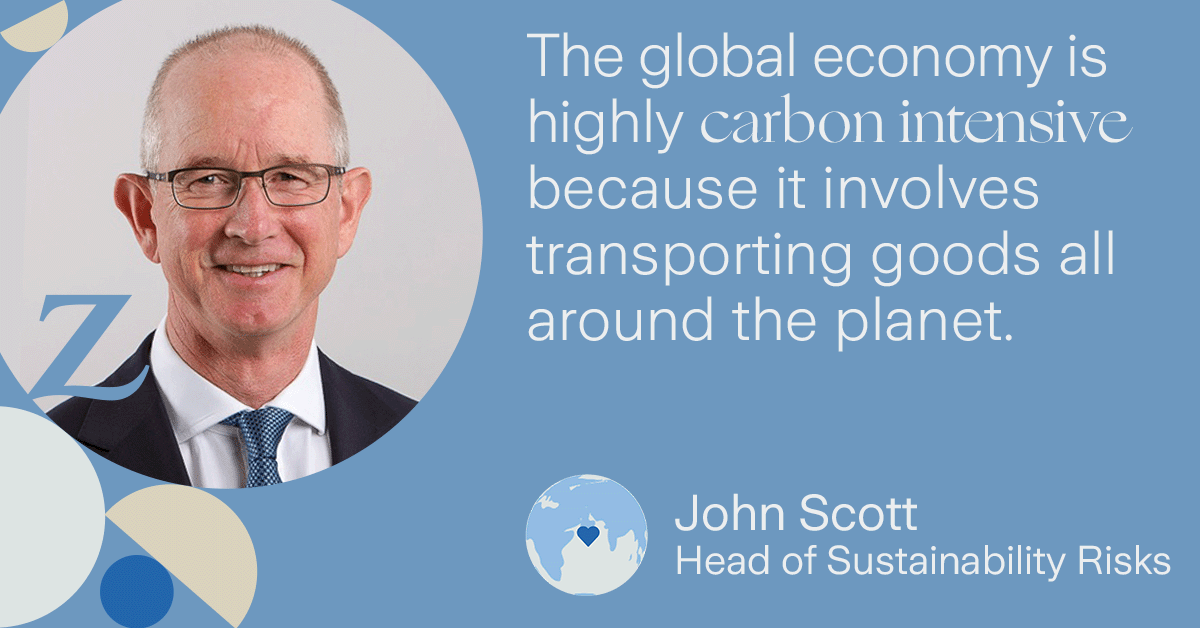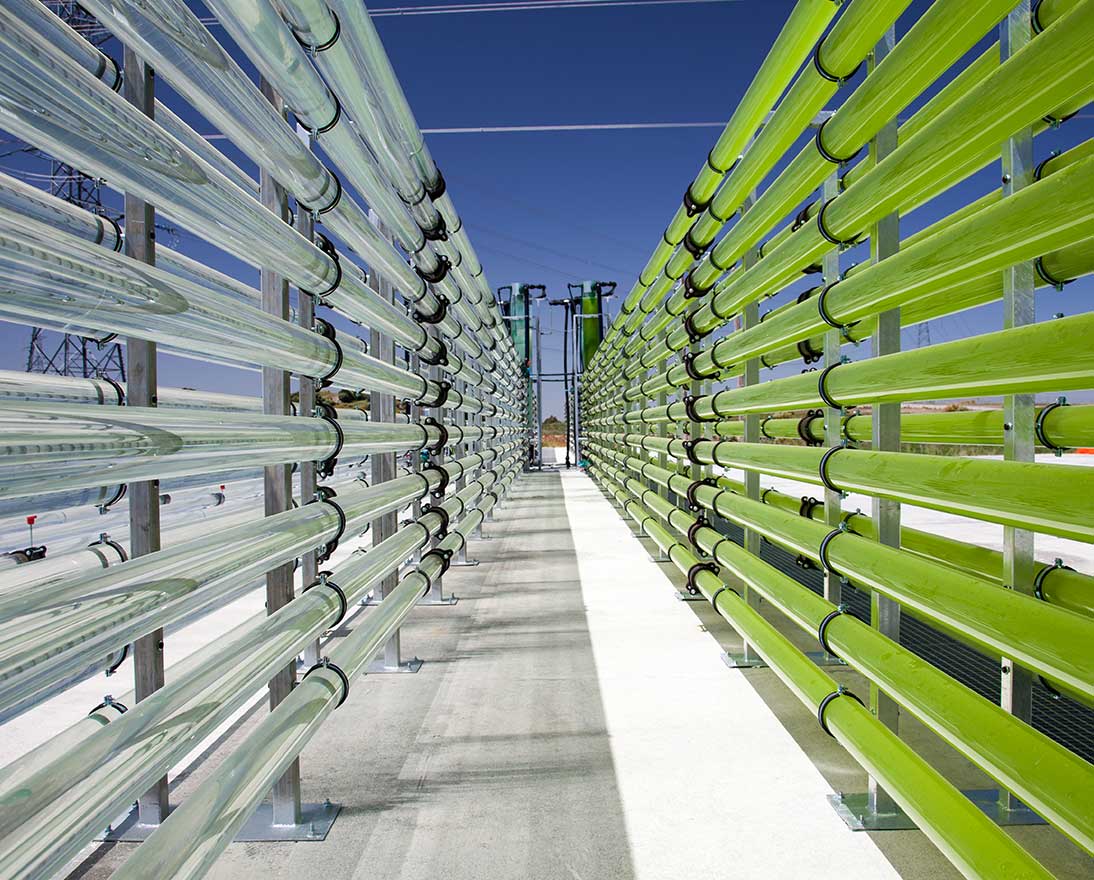How to reduce carbon in our supply chains – and why it matters
Climate resilienceArticleOctober 12, 20217 min read
Most companies’ total carbon emissions are created by their supply chains, either upstream or downstream. Thankfully, from more efficient transport and packaging to carbon tariffs and labeling, there is a lot that can be done to reduce supply chain emissions without hugely increasing costs for the consumer. Here’s how.
When companies first start to look at reducing their carbon footprint, they usually look close to home, by making their own operations and infrastructure more sustainable. They might decide to power their offices with renewable energy, for example, or to use recycled stationery, or replace petrol and diesel vehicles by going electric. These are all steps in the right direction. But most businesses are likely to create an even bigger positive impact by reducing carbon from their supply chains – the sequence of processes overseen by other organizations that are involved in the production and distribution of their products.
A 2016 report by McKinsey estimates that a remarkable 90 percent of consumer packaged goods companies’ impact on the environment and more than 80 percent of their emissions comes from their supply chains. While a study by the CDP, a global charity that helps companies manage their impact on the environment, suggests that supply chain emissions are, on average, 5.5 times greater than a company’s own, direct emissions. These multiples are even higher in certain economic sectors such as retail (11.5 times greater), personal and household goods companies (19 times) and food and beverage companies (24 times). In fact, the global supply chains in eight key industries – food, construction, fashion, fast-moving consumer goods, electronics, automotive, professional services and freight – account for more than 50 percent of total global emissions. Downstream use of fossil fuels in transport, energy and industry is still the dominant driver of global CO2 emissions accounting for 89 percent of CO2 emissions in 2018.

As John Scott, Head of Sustainability Risk at Zurich Insurance Group (Zurich), says: “The global economy is still highly carbon intensive because it involves transporting goods all around the planet. When people focus on reducing their personal carbon footprint, they often don’t consider that the things they buy each week might be manufactured in markets far from where they are sold or consumed. Consumers don’t typically think about the carbon emissions impact of what it took to package and transport them all the way to their front door.”?
Counting the carbon
Nigel Topping, a High-Level Climate Action Champion for the United Nation’s Framework Convention on Climate Change (UNFCCC), writes in a report for the World Economic Forum that: “Supply chain decarbonization will be a ‘game changer’ for the impact of corporate climate action.” But how do companies start to make a difference in areas of business beyond their direct control? The first thing they – and their customers – need is information, so that through measurable data and transparent reporting the full extent of their supply chain emissions is clear.
As Gabrielle Durisch, Zurich’s Head of Sustainability for Commercial Insurance, says: “Companies need to start calculating the carbon emissions they’re supporting through their supply chains and then make this information public. We need to make the right data available so that people understand the full environmental impact of their purchasing decisions.”
Transportation accounts for 14 percent of global greenhouse gas emissions. And within that figure the majority of emissions are caused by road transportation and shipping, with personal travel responsible for the remaining 5 percent.
“Many people focus on personal transport and air travel when they’re trying to reduce their personal carbon footprint,” says Scott, “but solving the problem of emissions created in supply chains that transport the goods and services they use every day is much more challenging.” As well as better information to reveal the true carbon footprint of products imported from abroad, another solution is the introduction of tariffs or taxes on carbon intensive goods as they are brought into a country, but that causes significant geopolitical challenges as illustrated by the lack of agreement on Article 6 of the Paris Agreement; the rulebook on carbon markets.

Transparency on the mechanisms to trade carbon across borders could potentially incentivize companies to shorten their supply chains and manufacture goods locally, a lesson which according to John Scott many businesses learnt during the COVID-19 pandemic, driven not by emissions reductions, but flexibility and resilience in supply chains. “One thing the pandemic has taught us is that if we can’t import goods from thousands of miles away – such as personal protective equipment – then we should start making and sourcing them locally. This creates resilience in supply chains as well as reducing supply chain emissions overall.”?
The importance of packaging
Another huge contributor to supply chain emissions is packaging. And this does not simply mean the cardboard box that a product is sold in. Scott uses the analogy of a Russian doll to illustrate this point, highlighting how a product in a small plastic container that you purchase in the supermarket, for example, is itself displayed in a larger cardboard box which uses plastic wrapping, which was previously packed into larger boxes, which were in turn packaged into even bigger crates that were then transported in giant shipping containers. “All the way along this chain,” says Scott, “there are different layers of packaging, some of which can be reused or recycled and some not. This creates a lot of emissions through the use of forestry products such as cardboard and paper. Especially if they are not from recycled or sustainable sources, which are then added to the fuel emissions produced by transportation.”?
There is plenty that companies can do to help, both by sourcing supplies locally and redesigning their products, services and packaging to be more efficient. However, as Gabrielle Durisch points out, a drastic cut in supply chain emissions requires a change in customers’ mindsets too: “You have choices as a consumer. Everyone is used to getting things immediately, but are we prepared to wait longer for a product to be delivered? Because if container ships traveled slower, they would also use less fuel. Or are we prepared to use a replacement part for our car that has been recycled? Adopting a consumer culture that chooses to repair instead of replace would make a huge difference to supply chains.”
Obstacles and opportunities
Encouragingly, moving to a world of net-zero supply chains is not predicted to greatly increases costs to the consumer. In fact, it is thought that around 40 percent of all supply chain emissions could be abated using available and relatively affordable methods such as increasing efficiency, recycling and the use of renewable energy sources. What’s more, if zero supply chain emissions are achieved in the future, costs to consumers would only go up by 1-4 percent in the medium term. Consumers sound more than ready to make this change, with one survey finding that 70 percent of people are willing to pay a 5 percent premium for products that have been produced in a sustainable way.
That said, an enormous amount of work still needs to be done to bring supply chain emissions into sharper focus for both companies and consumers. According to the Climate Action 100+ net-zero Company Benchmark, which assesses companies’ performance in reducing their emissions, 50 percent of businesses with a stated ambition of achieving net-zero by 2050 do not yet cover the full scope of their value chain emissions.
And while decarbonizing supply chains remains one of the most important – and complex –challenges facing the global economy, significant progress is being made. “I think what often gets underestimated,” says Gabrielle Durisch, “is the amount of passion within corporations to tackle the kind of complicated, long-term problems presented by making their supply chains more sustainable. The energy and commitment these companies are already bringing to the challenge is commendable.”







